Understanding Contracts for Difference (CFDs): Your Essential Guide
Have you ever looked at the financial markets and wondered how some traders manage to participate in diverse global assets without owning the actual stocks, commodities, or currencies? This often brings us to the world of derivatives, and specifically, Contracts for Difference, or CFDs. CFDs have grown significantly in popularity, offering traders a flexible way to speculate on the price movements of a vast range of underlying assets. But what exactly are they, and how do they work? More importantly, what are the significant risks involved, which are often underestimated by new traders?
In this guide, we aim to provide you with a comprehensive understanding of CFDs. Think of us as your guide on this journey into derivative trading. We’ll demystify the core mechanics, explore the crucial concept of leverage, discuss the advantages and the substantial disadvantages (especially the risk of rapid financial loss), break down the costs, and walk you through the basic steps of getting started. Our goal is to equip you with the knowledge needed to approach CFD trading with eyes wide open, understanding both its potential and its inherent dangers.
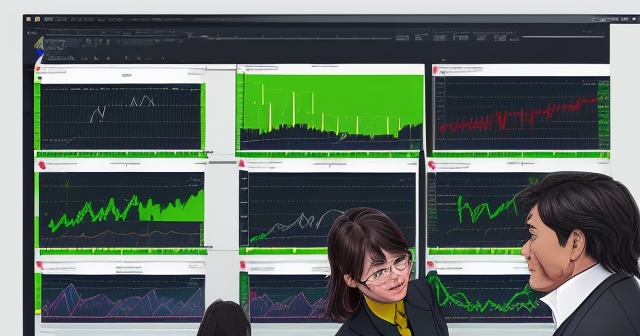
What is a CFD and How Does it Function?
At its heart, a Contract for Difference (CFD) is an agreement between two parties – typically you, the trader, and a broker – to exchange the difference in the price of an underlying asset from the time the contract is opened until it is closed. When you trade a CFD, you are not buying or selling the actual asset itself, whether it’s shares of a company, a barrel of oil, or a unit of a currency pair like EUR/USD. Instead, you are simply speculating on whether the asset’s price will go up or down.
Let’s break down the core mechanism. Suppose you believe the price of Gold will rise. You would ‘buy’ or ‘go long’ a CFD on Gold at the current market price. If the price of Gold increases by a certain amount, and you then ‘sell’ or ‘close’ your CFD position, you would make a profit equivalent to that price difference, multiplied by the size of your position. Conversely, if the price of Gold falls, and you close your position, you would incur a loss equivalent to that price difference, again multiplied by your position size.
The same principle applies if you believe the price of an asset will fall. You would ‘sell’ or ‘go short’ a CFD. If the price indeed falls, you profit when you close the position. If it rises, you lose. This ability to easily speculate on falling markets is a significant feature of CFD trading, distinguishing it from traditional stock investing where profiting from a downturn typically requires more complex strategies like borrowing and selling shares (short selling), which often involves additional costs.
CFD trading is usually conducted Over-The-Counter (OTC), meaning transactions happen directly between you and the broker, rather than on a central exchange like the New York Stock Exchange or the London Stock Exchange. The CFD broker essentially mirrors the price movements of the underlying asset from the relevant market. While this OTC structure offers flexibility, it also introduces counterparty risk – the risk that the other party (in this case, the broker) might default on their obligations. However, regulatory measures in many jurisdictions aim to mitigate this risk by requiring brokers to segregate client funds.
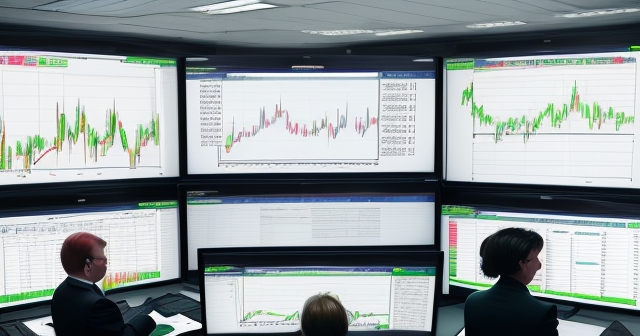
The Power of Leverage: Magnifying Potential, Amplifying Risk
Perhaps the most significant characteristic, and often the biggest draw for traders, is the use of leverage in CFD trading. Leverage allows you to control a large position in the market with a relatively small amount of capital, known as the margin. It’s like using a financial loan from your broker to increase your trading power.
Here’s how it works: If a CFD broker offers leverage of, say, 1:20, it means that for every $1 of your own capital (margin), you can control $20 worth of the underlying asset. So, to open a position equivalent to buying 1,000 shares of a stock priced at $10 per share (a total value of $10,000), you might only need to put down $500 (1/20th of $10,000) as initial margin. This frees up the rest of your capital, theoretically allowing you to open other positions or simply maintain a buffer.
- Leverage magnifies both potential profits and potential losses.
- A small price movement against your position can lead to large losses.
- Using margin requires careful monitoring of your account equity.
The allure is clear: with a small amount of money, you can potentially gain exposure to significant price movements and achieve high returns on your invested capital if the market moves in your favor. A small percentage price change in the underlying asset can translate into a large percentage gain on your margin deposit.
However, and this is absolutely critical, leverage is a double-edged sword. It magnifies potential profits, but it equally, or even more powerfully, magnifies potential losses. If the market moves against your leveraged position, losses are calculated on the full value of the position, not just your initial margin. Using the previous example, if the stock price falls by just 1% (from $10 to $9.90), your $10,000 position value drops by $100. This $100 loss represents 20% of your initial $500 margin ($100 / $500). A relatively small market move can quickly erode, or even completely wipe out, your initial capital, and potentially lead to losses exceeding your deposit.

This inherent characteristic of leverage is the primary reason why CFDs carry such a high level of risk, particularly for retail investors. Statistics from various brokers consistently show that a significant majority – often cited as 65% or even over 70% – of retail investor accounts lose money when trading CFDs. This is not a casual warning; it is a statistical reality that underscores the volatile nature of leveraged trading.
Maintaining sufficient margin is crucial. If your losses cause your account equity to fall below a certain percentage of the margin required to keep your positions open, your broker may issue a margin call, requesting you deposit more funds to cover potential further losses. If you fail to meet the margin call, the broker may automatically close some or all of your positions to prevent further losses, often at unfavorable prices, potentially locking in significant losses for you.
The Inherent Risks of Trading Contracts for Difference
Given the discussion on leverage, the primary risk – the high risk of rapid money loss – is already evident. But let’s delve deeper into the various risks associated with CFD trading, as a thorough understanding is paramount before you even consider placing a single trade.
| Risk Type | Description |
|---|---|
| Leverage Risk | Amplifies both profits and losses; small unfavorable price movements can quickly result in large losses. |
| Market Risk | Inherent volatility of financial markets can lead to rapid and unexpected price changes. |
| Counterparty Risk | Risk that the broker may default on their obligations, especially in OTC trading environments. |
| Liquidity Risk | Difficulty in closing positions quickly at desired prices during low liquidity periods. |
| Regulatory Risk | Variations in regulations can affect trading conditions and leverage allowed; certain regions may prohibit CFDs. |
| Complexity Risk | Lack of understanding of market dynamics can lead to costly errors and missed opportunities. |
First and foremost, Leverage Risk remains the dominant threat. As we explored, while leverage can amplify profits, its capacity to amplify losses is devastatingly effective. Small unfavorable price movements in the underlying asset can lead to large losses relative to your initial margin, and potentially exceed your deposited capital. You could lose your entire investment quickly.
Secondly, there is Market Risk. CFDs track the price of underlying assets, and financial markets are inherently volatile. Prices can move rapidly and unexpectedly due to economic news, political events, market sentiment, or other factors. Even without leverage, price volatility can lead to losses; with leverage, these losses are dramatically amplified.
Thirdly, remember that CFD trading is often Over-The-Counter (OTC). This means you are trading directly with the broker, not on a regulated exchange. This introduces Counterparty Risk. While reputable brokers are regulated and required to segregate client funds, there is still a theoretical risk that the broker could default on their obligations to you. Choosing a well-regulated and financially stable broker is essential to mitigate this.
Fourthly, you might encounter Liquidity Risk. While CFDs on major assets like popular Forex pairs, major indices, or liquid stocks are typically highly liquid, CFDs on less popular assets or during times of extreme market stress might experience lower liquidity. This could lead to difficulties in opening or closing positions quickly at the desired price, potentially resulting in slippage (executing a trade at a price different from the requested price) or inability to exit a losing position when you want to.
Fifthly, be aware of Regulatory Risk. The regulatory environment for CFDs varies significantly across different jurisdictions. While many countries allow CFD trading, some (like the United States for retail investors) explicitly prohibit it. Regulations can change, potentially impacting the availability, features (like maximum leverage), and safety measures associated with CFD trading. It is your responsibility to understand the regulatory framework in your region and that of your chosen broker.
Finally, consider the complexity. While the basic concept of speculating on price difference seems simple, successful trading requires understanding market dynamics, technical analysis, fundamental analysis, risk management strategies, and the specific mechanics of CFD platforms. Complexity Risk means that a lack of understanding can easily lead to costly errors. This is why comprehensive education is so important.
Understanding the Costs of Trading CFDs
Trading CFDs isn’t free. Brokers charge fees and costs for facilitating your trades. Understanding these costs is vital for assessing the potential profitability of your trading activities. The main costs you will encounter are the spread, commission (sometimes), and financing charges.
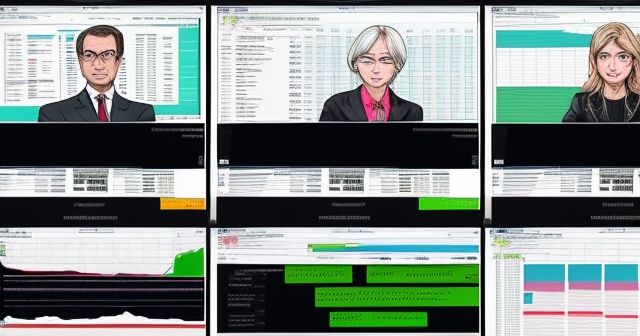
| Cost Type | Description |
|---|---|
| Spread | The difference between the buy (ask) and sell (bid) price of a CFD, representing the broker’s charge for executing the trade. |
| Commission | Sometimes charged by brokers, especially on stock CFDs; may be a percentage of the trade value or a fixed amount. |
| Financing Charges | Applied to positions held overnight; reflects the cost of leverage and can accumulate significantly over time. |
| Inactivity Fees | Charged by some brokers if there is no trading activity for an extended period. |
| Currency Conversion Fees | May apply if your account currency differs from that of the underlying asset. |
The most common cost is the Spread. The spread is the difference between the buy (ask) price and the sell (bid) price of a CFD. When you open a position, you effectively buy at the ask price and would immediately need to sell at the bid price to close it. The spread represents the broker’s charge for executing the trade. For example, if the bid price for a Forex pair is 1.1200 and the ask price is 1.1201, the spread is 0.0001 (or 1 pip). If you open and immediately close a position, you would lose the value of the spread. Tighter spreads are generally better for traders as they represent lower transaction costs.
Some CFD brokers also charge a Commission, particularly when trading CFDs on shares or stocks. This is usually a percentage of the total trade value or a fixed amount per share/contract. If a commission is charged, the spread might be tighter compared to instruments where only a spread is applied. You need to factor in both the spread and the commission when calculating the total transaction cost for such assets.
The third significant cost is the Financing Charge, also known as the overnight funding rate or rollover fee. This charge is applied to positions held open overnight (typically after the market close time, which varies by asset and broker). It’s essentially an interest payment reflecting the cost of the leverage you are using. If you are long (bought) a CFD, you typically pay a financing charge. If you are short (sold) a CFD, you might receive a small payment or still pay a smaller charge, depending on interest rate differentials and broker policy. These charges can accumulate significantly over time if you hold positions for days, weeks, or months, making CFDs generally less suitable for very long-term position holding compared to outright asset ownership.
Other potential, though less frequent, costs might include inactivity fees (if you don’t trade for a long period) or currency conversion fees (if your account currency is different from the currency of the underlying asset). Always review your broker’s fee structure carefully.
Why Trade CFDs? Exploring the Potential Advantages
Despite the significant risks, CFDs offer several features that attract traders. Understanding these advantages helps explain their popularity, but always weigh them against the risks.
The most frequently cited advantage is Higher Leverage. While we’ve heavily emphasized the risk this entails, the potential to control larger positions with less capital can appeal to traders looking to maximize their potential return on investment (ROI). It allows participation in markets that might otherwise be inaccessible due to the high cost of outright purchase.
Another major advantage is Access to a Wide Range of Global Markets. CFD brokers typically offer CFDs on a huge variety of asset classes and instruments from around the world through a single trading account and platform. This includes:
- Forex (FX) Pairs: Major, minor, and exotic currency pairs (e.g., EUR/USD, GBP/JPY).
- Stock Indices: Major global indices like the S&P 500, FTSE 100, DAX, Wall Street, US Tech 100.
- Commodities: Metals (Gold, Silver), Energies (Oil, Natural Gas), Agriculturals.
- Stocks/Shares: CFDs on individual company shares listed on major global exchanges.
- Cryptocurrencies: CFDs on popular digital assets like Bitcoin and Ether.
- Potentially others like Bonds or ETFs.
This broad market access from one account provides flexibility, allowing traders to speculate on different markets based on their analysis and opportunities they perceive.
The Ability to Go Short (Speculate on Falling Prices) is a significant benefit. As mentioned earlier, shorting with CFDs is often much simpler and less costly than shorting physical shares or other assets. This means you can potentially profit whether the market is rising (by going long) or falling (by going short).
Furthermore, brokers typically offer a variety of Order Types. Beyond basic buy and sell orders, you can use tools like Stop Loss orders (to automatically close a position if it moves against you by a certain amount, limiting potential losses) and Limit Orders (to close a position for profit when it reaches a certain price, or to open a position only at a specific price). These tools are crucial for implementing risk management strategies.
If you’re considering exploring global markets, particularly Forex trading, finding a platform with diverse offerings is key. If you’re considering starting Forex trading or exploring more CFD instruments, Moneta Markets is a platform worth considering. Hailing from Australia, it offers over 1000 financial instruments, suitable for both novice and professional traders.
Going Long vs. Going Short: Profiting in Any Market?
One of the most empowering aspects of CFD trading is the ability to potentially profit regardless of the overall market direction. This is achieved through the concepts of ‘going long’ and ‘going short’.
When you Go Long (or ‘buy’), you are speculating that the price of the underlying asset will increase. This is the more traditional approach that many people associate with investing – buying something hoping its value will rise. If you go long on a CFD for Apple stock at $170 and the price rises to $175, you would make a profit (before costs) based on that $5 difference multiplied by the number of CFD contracts you bought.
When you Go Short (or ‘sell’), you are speculating that the price of the underlying asset will decrease. This might seem counterintuitive if you’re only used to buying assets, but in derivatives like CFDs, it’s straightforward. If you go short on a CFD for the DAX index at 18,000 points, and the index falls to 17,900 points, you would make a profit (before costs) based on that 100-point difference multiplied by the number of contracts you sold. If the index rises to 18,100 points, you would incur a loss.
This flexibility allows traders to develop strategies for different market conditions. In a strong bull market, you might focus on going long on assets showing upward momentum. In a bear market or during periods of significant volatility, you might look for opportunities to go short on assets that appear weak or overvalued. This contrasts sharply with simply holding assets and waiting for them to appreciate in value over the long term.
However, it’s important to note that going short also carries risks. While theoretically there’s no limit to how much a price can rise (leading to potentially unlimited losses when shorting), in practice, risk management tools like stop losses are used to cap potential losses. Also, significant upward price spikes can occur quickly, making short positions very risky if not managed carefully. The financing costs for holding short positions overnight can also vary and sometimes be higher than for long positions, depending on the asset and market interest rates.
A Step-by-Step Guide to CFD Trading (The Basics)
Once you understand the fundamentals, you might wonder about the practical steps involved in trading CFDs. Here’s a simplified breakdown:
-
Educate Yourself: This article is a start, but continuous learning is crucial. Study market analysis techniques (technical and fundamental), risk management, and specific trading strategies. Understand the instruments you want to trade.
-
Choose a Reputable Broker: Select a broker that is well-regulated in a recognized jurisdiction. Compare their fees (spreads, commissions, financing), available instruments, trading platforms (like MT4, MT5, or proprietary platforms), customer support, and educational resources. Ensure they offer account types suitable for your needs.
-
Open and Fund an Account: You’ll need to go through an account opening process, which involves verifying your identity and residence (KYC/AML procedures). Once approved, you’ll need to deposit funds into your trading account. Remember the high risk involved and only deposit capital you can afford to lose.
-
Start with a Demo Account (Highly Recommended): Before risking real money, most brokers offer a free demo account funded with virtual money. Use this to practice navigating the platform, placing trades, using order types (like stop losses and limit orders), and testing strategies in a risk-free environment. Gain confidence and familiarity first.
-
Choose a Market to Trade: Based on your analysis and interests, decide which underlying asset you want to speculate on. Is it a specific Forex pair, a major stock index, Gold, or perhaps a popular stock?
-
Decide Whether to Go Long or Short: Based on your market analysis, determine if you expect the price to rise (go long/buy) or fall (go short/sell).
-
Determine Your Trade Size: Decide how many CFD contracts or lots you want to trade. This will depend on the capital in your account, the required margin, and importantly, how much risk you are willing to take on this specific trade. Remember, a larger trade size means larger potential profits, but also larger potential losses.
-
Set Your Risk Management Orders: This is perhaps the most critical step after deciding on the trade direction and size. Always use a Stop Loss order to define the maximum amount you are willing to lose on the trade. Consider using a Limit Order (Take Profit) to automatically close the position if it reaches your target profit level.
-
Place the Trade: Enter the details into your trading platform (instrument, buy/sell, size, stop loss, limit order) and execute the trade.
-
Monitor Your Position: Keep an eye on the market and your open position. Be prepared to adjust your strategy or close the trade if market conditions change or if the trade is moving against you.
-
Close the Position: When you decide to exit the trade (either because it hit your stop loss/limit order, you manually close it, or you’ve achieved your desired profit/loss), you close the contract. The profit or loss is then credited or debited from your account.
This process must be approached with discipline and a clear trading plan. Impulsive decisions based on emotion are a common pitfall for traders.
Crucial Risk Management Strategies for CFD Trading
We cannot stress this enough: given the inherent leverage and the high probability of losing money, effective risk management is not optional; it is absolutely essential for survival in CFD trading. Without it, you are essentially gambling.
Here are some fundamental risk management strategies you must implement:
-
Only Risk Capital You Can Afford to Lose: This is the golden rule of all trading and investing. Never trade with money needed for living expenses, paying bills, or other essential needs. Assume that any money you put into a CFD trading account is at risk of being lost entirely.
-
Use Stop Loss Orders Religiously: A stop loss order is an instruction to your broker to close your position automatically if the price moves against you and reaches a specified level. This caps your maximum potential loss on any single trade. Decide on your stop loss level *before* you enter a trade and stick to it. Don’t widen your stop loss out of hope that the market will turn around; this is often a recipe for disaster.
-
Determine Your Position Size Carefully: Don’t just open a trade with a random amount. Calculate your position size based on the size of your trading capital and the maximum percentage of that capital you are willing to risk on a single trade. A common guideline is to risk no more than 1-2% of your total trading capital on any one trade. If you have a $10,000 account and risk 1%, your maximum loss on a trade should be $100. Knowing your stop loss level allows you to calculate the appropriate position size to meet this risk threshold.
-
Maintain Sufficient Margin: Always ensure you have enough funds in your account not just to meet initial margin requirements, but also to withstand potential drawdowns. Having a buffer above the maintenance margin level can help you avoid premature margin calls and forced liquidations during minor market fluctuations.
-
Don’t Over-Leverage: Just because a broker offers very high leverage (e.g., 1:500) doesn’t mean you should use it. The higher the leverage, the smaller the price movement required to wipe out your margin. Use leverage judiciously and understand the exposure it creates.
-
Diversify (Sensibly): While CFDs offer access to many markets, opening too many positions across uncorrelated assets simultaneously can make monitoring difficult. Diversify sensibly across different asset classes or strategies, but ensure you can still manage each position effectively.
-
Have a Trading Plan: Define your strategy, entry and exit rules, risk per trade, and overall risk tolerance before you start trading. Stick to your plan and avoid emotional trading. Review and adapt your plan based on your results.
-
Continuous Learning and Analysis: Markets are dynamic. Stay informed about economic events, news, and technical indicators relevant to the assets you trade. Continuously learn and refine your analysis skills.
Mastering risk management is arguably more important than mastering market analysis when it comes to long-term survival as a trader, especially with leveraged instruments like CFDs.
The Regulatory Landscape and Geographic Availability
The availability and regulation of CFD trading vary significantly depending on where you are located. It’s crucial to understand the rules that apply to you and your chosen broker.
| Region | Regulation Status |
|---|---|
| United Kingdom | CFD trading is regulated by the Financial Conduct Authority (FCA). |
| Australia | Regulated by the Australian Securities and Investments Commission (ASIC). |
| United States | CFDs are prohibited for retail investors. |
| European Union | CFD trading is regulated; rules vary by country. |
| Singapore | CFD trading is permitted and regulated. |
In many parts of the world, including the United Kingdom, Australia, Switzerland, Singapore, South Africa, Canada, New Zealand, and many countries within the European Union, CFD trading is permitted and regulated. Regulatory bodies in these regions, such as the Financial Conduct Authority (FCA) in the UK, the Australian Securities and Investments Commission (ASIC) in Australia, or national regulators in EU member states (overseen by ESMA), impose rules on CFD providers. These rules often include requirements for client money segregation, capital adequacy for brokers, and measures aimed at protecting retail investors, such as mandatory risk warnings, restrictions on marketing, and sometimes limits on the maximum leverage offered for different asset classes.
However, there is a notable exception: CFDs are explicitly prohibited for retail investors in the United States. The U.S. Securities and Exchange Commission (SEC) and the Commodity Futures Trading Commission (CFTC) do not permit brokers to offer CFDs to U.S. residents or citizens. This is primarily due to their OTC nature, the high leverage involved, and the potential for losses to exceed initial investment – risks that U.S. regulators deem too high for retail traders within their jurisdiction. If you are a U.S. person, you cannot legally trade CFDs offered by brokers anywhere in the world.
For individuals outside the US, while CFD trading is allowed, the specific regulations, investor protections, and available leverage can differ based on the broker’s licensing jurisdiction and your own country of residence. Some brokers operate under multiple licenses, allowing them to serve clients in different regions according to the applicable rules. Always check the regulatory status of a broker and ensure they are authorized to offer services in your country.
Choosing a platform involves looking at regulation, available instruments, and trading technology. If you’re looking for a brokerage that combines regulatory adherence with technological flexibility for global trading, Moneta Markets is worth considering. It holds multi-country regulatory certifications including FSCA, ASIC, and FSA, and provides complete support such as segregated client funds, free VPS, and 24/7 Chinese customer service, making it a preferred choice for many traders.
Choosing Your CFD Broker: What to Look For
Selecting the right broker is a critical decision when you decide to explore CFD trading. Your broker provides the platform, the pricing, and holds your funds. A good broker should be reliable, trustworthy, and meet your specific trading needs. Here are key factors to consider:
-
Regulation and Security: This is non-negotiable. Choose a broker regulated by a reputable financial authority (e.g., FCA, ASIC, CySEC, BaFin). Regulation provides oversight and protection for your funds (often requiring segregation of client funds from company funds). Check the broker’s licenses and read reviews.
-
Available Instruments: Does the broker offer CFDs on the asset classes you are interested in trading (Forex, Stocks, Indices, Commodities, Cryptos, etc.)? Check the number of instruments available within those categories.
-
Costs: Compare spreads, commissions (if applicable), and overnight financing charges. These costs directly impact your trading profitability. Look for competitive pricing, but be wary of exceptionally low costs that might signal other issues.
-
Trading Platform: Is the platform user-friendly, stable, and equipped with the tools you need (charts, indicators, order types)? Common platforms include MetaTrader 4 (MT4), MetaTrader 5 (MT5), and proprietary platforms like cTrader or web-based interfaces. Consider if the platform is available on desktop, web, and mobile.
-
Execution Speed and Quality: How quickly and reliably are your orders executed? Slippage can erode profits or increase losses, especially in fast-moving markets. Look for brokers known for good execution.
-
Customer Support: Is support available when you need it? In what languages? How can you contact them (phone, email, chat)? Test their responsiveness.
-
Educational Resources: Does the broker provide educational materials, webinars, tutorials, or analysis that can help you learn and improve your trading skills? This is particularly valuable for beginners.
-
Account Types and Features: Do they offer different account types based on your trading volume or capital? Are there features like VPS (Virtual Private Server) for automated trading, or different deposit/withdrawal methods?
-
Demo Account: As mentioned, a demo account is essential for practice. Ensure the broker offers a free, realistic demo account.
Choosing the right broker is a significant step in your CFD trading journey. Take the time to research and compare options based on your priorities and trading style. For instance, in selecting a trading platform, Moneta Markets’ flexibility and technical advantages are worth highlighting. It supports major platforms such as MT4, MT5, and Pro Trader, combined with high-speed execution and low spread settings, providing an excellent trading experience.
Practice Makes Perfect: The Value of Demo Accounts
We touched upon demo accounts earlier, but their importance warrants a dedicated discussion. Think of a demo account as your risk-free laboratory for learning and experimentation in the world of CFD trading.
A demo account is essentially a simulation of a live trading environment provided by the broker. It uses real-time market data and the broker’s actual platform but trades with virtual, non-withdrawable funds. This means you can experience the full process of trading – opening and closing positions, setting stop losses and limit orders, using indicators, and dealing with spreads and margin requirements – without risking any of your own hard-earned money.
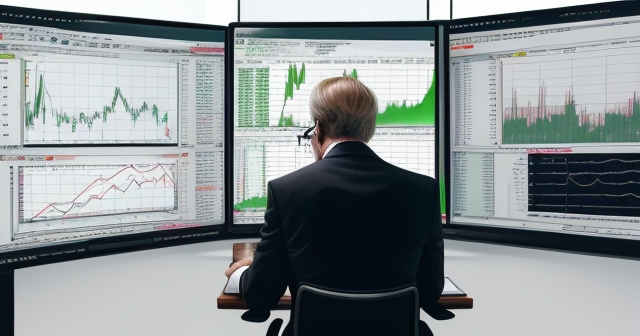
Why is this so valuable? For starters, it allows you to become completely familiar with the broker’s trading platform. Each platform has its nuances, and knowing how to quickly and correctly execute trades and set risk management orders is vital, especially in volatile markets. Trying to figure out the platform interface while managing a live, leveraged position is a recipe for costly errors.
Secondly, a demo account is the perfect place to test and refine your trading strategies. You can see how your chosen strategy performs under various market conditions without financial consequences. You can experiment with different instruments, position sizes, and risk management settings. This trial-and-error process is invaluable for developing a trading approach that suits your personality and goals.
Thirdly, trading on a demo account helps you build discipline and emotional control. Even without real money at stake, you can practice sticking to your trading plan, managing simulated drawdowns, and avoiding impulsive trades. Developing good habits in a demo environment is crucial before you add the psychological pressure of trading with real capital.
Spend a significant amount of time practicing on a demo account until you are consistently profitable (or at least consistently following your plan) and feel completely comfortable with the platform and the trading process. Don’t rush into live trading. Many successful traders spend weeks or even months practicing on demo accounts before risking real money. View it as an essential part of your education and preparation.
Conclusion: Approaching CFD Trading with Caution and Knowledge
Contracts for Difference (CFDs) offer an intriguing avenue for traders to speculate on a vast array of financial markets using leverage. Their appeal lies in the potential for magnified profits, broad market access, and the ability to profit from both rising and falling prices. However, as we have discussed extensively, these advantages come tethered to significant, often severe, risks.
The core message to take away is this: CFDs are complex instruments and come with a high risk of losing money rapidly due to leverage. A large percentage of retail investor accounts lose money when trading CFDs. This is not boilerplate text; it reflects the reality of trading leveraged products. You must be fully aware of this before you even think about trading.
Leverage is a powerful tool, but it amplifies losses just as effectively as it can amplify profits. The costs involved – spreads, commissions, and particularly overnight financing charges – can eat into potential gains. Market volatility, counterparty risk, and regulatory differences (especially the prohibition in the United States) are all factors you must consider.
Successful CFD trading, or at least surviving in this challenging environment, requires more than just hoping the market goes your way. It demands a solid understanding of how CFDs work, diligent application of robust risk management strategies (especially using stop losses and appropriate position sizing), continuous learning, and discipline to stick to a well-thought-out trading plan. Starting with a demo account and practicing extensively is an absolutely crucial step before risking real capital.
Trading decisions are ultimately yours to make. The information provided here is for educational purposes only and does not constitute financial advice. Before engaging in CFD trading, you should carefully consider your investment objectives, level of experience, and risk appetite. You should also seek independent financial advice if necessary and ensure you fully understand the risks involved. Armed with knowledge, caution, and a commitment to rigorous risk management, you can approach the world of CFD trading with a clearer perspective, understanding the significant challenges alongside the potential opportunities.
learn cfdsFAQ
Q:What are Contracts for Difference (CFDs)?
A:CFDs are agreements between a trader and a broker to exchange the difference in the price of an underlying asset over the lifespan of the contract.
Q:What are the primary risks of trading CFDs?
A:The main risks include leverage risk, market risk, counterparty risk, and liquidity risk, among others.
Q:Why is a demo account important for CFD trading?
A:A demo account allows traders to practice trading without risking real money, helping them understand the trading platform and refine their strategies in a risk-free environment.
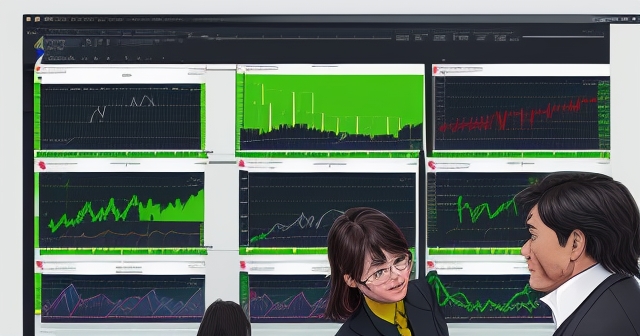
留言